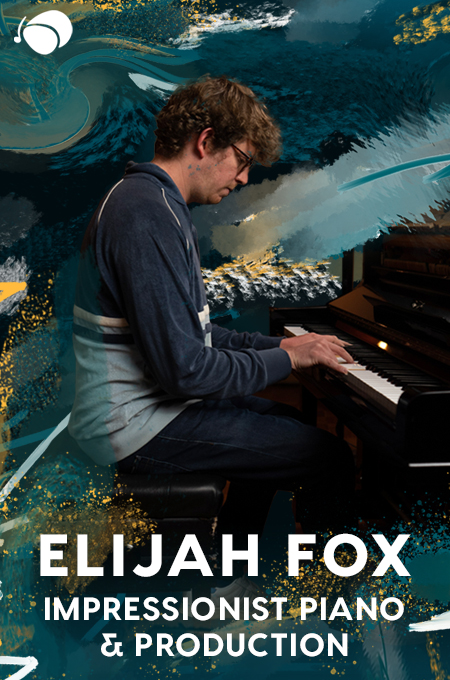+ Welcome to Soundfly! We help curious musicians meet their goals with creative online courses. Whatever you want to learn, whenever you need to learn it. Subscribe now to start learning on the ’Fly.
I have been working as a caretaker for autistic people in their homes for the last nine years. Each one of my clients has different needs, family experiences, and ways of communicating. One of the people I have been working with the longest is “Chris” (whose name has been changed for confidentiality).
Chris is nonverbal, meaning that according to his diagnosis, he has very limited faculty of speech. His familiar words are “mommy,” “ball,” and “rest.” When I first started working with him, I remember thinking to myself, how do I communicate with someone who does not speak?
I remember taking a ride with Chris to hang out at the mall, where I bought a new black metal album. Excited, and not thinking it would make much of a difference, I blasted my new album on the car ride home. While head-banging and listening to the screaming sounds of the singer, I noticed Chris intensely rocking back and forth. He seemed to enjoy the music and be energized by it.
It was common for me to play my favorite bands while Chris and I were driving or hanging out together in his room. Assuming that Chris enjoyed the music I played for him (I didn’t really see signs pointing to the contrary), I made him a mix CD. At the time, my musical taste was mostly limited to punk and metal.
One day, not long after, Chris’s grandmother told me she’d listened to the mix I’d made for him, and that nine out of ten of the tracks were way too intense for him, to the point of being unlistenable! I had to “tone down” the music I played for him.
Feeling a little dejected, I asked why. She explained that certain types of music can cause his nervous system to overload, and can even contribute to seizures.
Horrified by the idea that I (his caretaker) could cause Chris seizures, I made a conscious effort to do some research into music therapy practices, and step outside my comfort zone to explore different genres of music. Before all this, when I’d be in a musical mood, I would practice with my electric guitar, but I started picking up my nylon-string classical guitar instead. I even started bringing the guitar into work with me to see the effect my playing had on my coworkers and clients.
Not wanting to cause any unnecessary strife, I began improvising some soft, relaxing music while Chris and I spent time together. Chris was already prone to episodic seizures, suffering several a week. I observed his behavioral patterns and noticed that he became especially hyperactive a few hours before having a seizure, screaming at himself, banging on the walls, and throwing objects across the room.
It saddened me to see how much pain he was in. I wanted to help him, and I realized I might know how.
I began using music purposefully in my work with Chris. In the beginning, it was a lot of experimenting. If he was hyperactive and anxious, I would gently strum familiar chords with calming, soft and consonant tones, such as G major, C major, and A minor. It took time for me to adjust to playing softer music, having been raised on fast and loud, but over time I came to enjoy it more than I ever would’ve expected. When I played, Chris stopped throwing things and screaming. He would stay calm and quiet while I continued to play, sometimes for hours on end.
My own ear for music was affected by this at the same time. I began to see the music of artists like Chick Corea, Enya, and Miles Davis, for example, in a new light. I started paying closer attention to the emotional aspects of these new musical forms, and thinking deeply about how the music affected my mood, as well. I discerned pretty quickly that if a piece of music relaxed me, it would likely relax Chris, too.
And I was right. I’ll never forget the first time I played Chick Corea’s “Crystal Silence” from beginning to end for Chris. His demeanor calmed, his babbling ceased. From that point on, every time Chris got “wound up,” as his mother calls it, I put on this piece for him.
One day not long after, I witnessed a groundbreaking moment for Chris and his mother. I accompanied the two of them to Chris’s neurology appointment. In the car ride there, Chris was babbling slightly, but didn’t seem to be fully wound up. Then, as the lab technician was applying a CAT scan to Chris’s head, he suddenly became very hyperactive and loud. Noticing his uptick in anxiety, his mom asked me to put on relaxing music.
Within two minutes of “Crystal Silence,” Chris relaxed, and fell asleep even under the stressful circumstances. It was a big moment, and it meant that we had established a safe place that Chris could go when he felt uncomfortable.
I decided to try some new things and figure out where the boundaries were in this moment. I played Marc Ribot’s “Delancey Waltz.” I’d always personally found this song beautiful and sombre, but not particularly relaxing. Within a few moments, Chris came out of his relaxed state. Once again, he was unable to sit still and began chattering to himself while trying to remove the wires from his head. Realizing the music was too abrasive, I immediately switched the music to “On Your Shore,” from Enya’s Watermark. And just as I’d expected, Chris closed his eyes, laid back, and fell asleep.
Through the stressful procedure, it was music that helped Chris relax and sit still. We were able to communicate with each other through the universal language of music. I have extended my definition of “communication” to include these nonverbal, perhaps neurological messages we send back and forth to each other when music is in the air. These signals of behavior can be as clear as stating simply, “I don’t really like this” — something that has never been possible for Chris. For this hypersensitive autistic and epileptic man, music has become a medicine, not just for his emotional wellbeing, but also for his physical wellbeing.
What started as an experiment with Chris has now become an essential part of my practice, and it has shaped how I view music from a performance standpoint. The more work I do, the more I see the therapeutic, connecting power of music, and its vast potential and I can’t wait to learn more.
Improve all aspects of your music on Soundfly.
Subscribe to get unlimited access to all of our course content, an invitation to join our members-only Slack community forum, exclusive perks from partner brands, and massive discounts on personalized mentor sessions for guided learning. Learn what you want, whenever you want, with total freedom.





